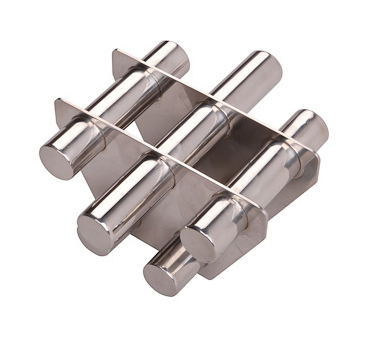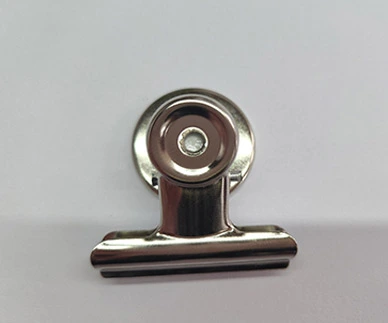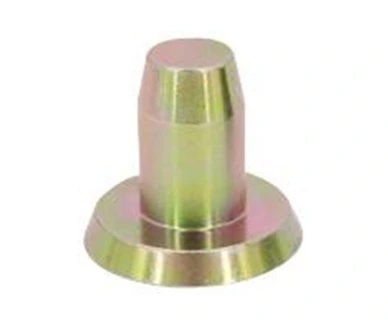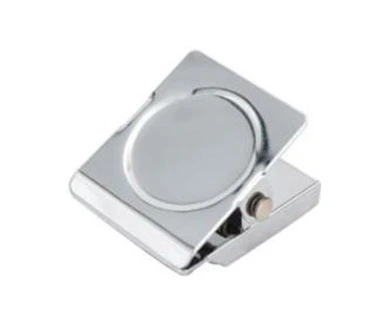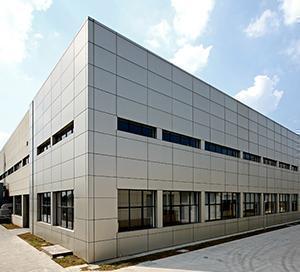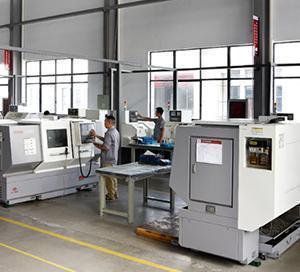You wouldn¡¯t think that magnets play an important role in the recycling, mining & quarrying industry, but they do. A magnetic separator is industrial equipment which creates a powerful magnetic flux.
They are used to protect vital process equipment downstream from damage while it produces a clean separated final product. This type of equipment includes primary jaw crushers, cone crushers , hammer mills and other tertiary crushers. At the same time it can effectively prevent long sharp metal shards from cutting, ripping or tearing conveyor belts.
They are most commonly used to separate tramp iron, also known as unwanted or damaged metal and ferrous impurities, from nonmagnetic materials conveyed in bulk form. These ferrous impurities originate from land fill or excavating machinery used to mine, extract, drill or recover raw material.
Application in the industry The type and style of magnets used in industry will depend on its location within the process. Larger materials and deeper burden depth require larger magnetic to be operational.
Magnets that are suspended over the belt are typically designed to remove large ferrous material such as hand held tools, iron scrap, machinery tips. But can also remove nails, wire, nuts and bolts from the process.
Rare earth magnets are employed to remove fine metals such as iron flakes, pins and bits of wire. These rare earth magnetic have now been improved to the point that they even remove materials such as (stainless steel) which are only weakly magnetic.
To eliminate the possibility of downstream equipment damage it¡¯s critical to remove ferrous impurities as early as possible. Therefore, magnetic separators should be installed at the beginning of the conveyor transport system. Magnetic separators can typically be designed to retrofit on any existing conveyor system, without the necessity of relocating major equipment. Magnetic separators are also used in combination with metal detectors to offer complete peace of mind. This will ensure that any metal material embedded or trapped in or under the ore that may escape the magnetic separator do not pass the metal detector.
Once a metal detector is tripped, the conveyor will stop and human intervention is required. This will ensure no metal components end up in the process that will cause costly problems and down time.
The origin or tramp metal
Operators of plant often wonder about the origin of tramp metal. In order to fully explain their origin, we must begin with the ore mining & quarry process. Ore can be mined from open cut and underground mines. In order to gain access to these valuable minerals either excavation or explosives are required. Parts can be often be left behind such as metal tool tips from jack hammers, heavy duty excavation bucket tips and drill parts. This tramp iron can escape and is difficult to remove during the mining phase.
Types of magnets used for protection of conveyors
In recent years, in order to satisfy the ever changing needs and requirements of the mining industry; new and improved magnetic separators had to be developed. Depending on the type of mineral being mined, the size of tramp irons occurring will vary. Hence, magnetic separators require varying degrees of magnetic flux power. These are separated into electro magnets and permanent magnets.
Electro Magnets
These powerful electro magnets require rectifiers; these are more commonly used in suspended applications. Suspended magnets need an overhead supporting structure to fix the magnet above a belt conveyor.
A rectifier changes alternating current (AC) to a direct current (DC). Generally, electro magnets require DC current in order to generate a magnetic field. These electro magnets contain two coils, as power is applied to the coils, this creates a powerful magnetic field which can now be used to remove tramp iron from conveyor belts.
Electro Magnets have the ability to remove large pieces of ferrous material from conveyor belts. If a permanent magnet was used, removal of this would be very difficult. But, with electro magnets removal of captured tramp metal is as simple as turning off the power source.
Permanent Magnets
A permanent magnet is made from a material that is magnetised and creates its own persistent magnetic field. Materials that can be magnetised, which are also the ones that are strongly attracted to a magnet, are called ferromagnetic. Ferromagnetic materials include iron, nickel, cobalt, some rare earth metals and some of their alloys, as well as some naturally occurring minerals such as lodestone.
Permanent magnetic separators are used on conveyor belts where only small levels of tramp ferrous material is expected. The ferrous material is captured by the magnet. Plant operators will monitor the amount of ferrous metals captured. Once it¡¯s determined that the magnet requires cleaning, a non metallic stainless steel tray scraper is used to remove the ferrous metals off the magnet.
Self Cleaning Magnets
These magnets are based on existing and improved technology of permanent and electro magnets.
Self cleaning magnetic separators are employed to automatically remove and separate metallic and non metallic materials (in most cases the product). This is only used if we expect large volumes of metallic materials to require separation.
Self cleaning magnetic separators include motors to drive belts, speed reducer and non metallic sweeper belt. These can be mounted either in line with the conveyor belt or in cross belt configuration.
New developments - future
In the past twenty years there has not been a lot of research in the magnetic separator area, but most industries have increased their standards of waste ferrous material separation from the end product.
The Chinese magnet industry now contributes to the world-market of permanent and electro magnets. High quality sintered ferrites and rare earth permanent magnets are readily available at reasonable prices.
An increasing number of overseas magnet users turn their purchase orders to Chinese permanent/electro magnet manufacturers. This sea change has resulted in high quality magnets with drastic reduction of operation and ongoing cost. Nevertheless, due to increased demand in the global market long leads time and quality consistency in some instances become an issue.
In such a competitive society, cost and quality become very important issues. There are a few methods to keep costs low. One is from the design perspective, to select the specific grade magnets for the appropriate protection application. Another is from the manufacturing perspective to limit the unnecessary manufacturing process of magnets.
Technology advances in material and manufacturing enables us to build magnetic separators which are tailored to a specific application. The magnets are built to specifications with the right strength for the application. If the magnets have been correctly engineered, these powerful separators can remove almost any ferrous material that dares to pass through their magnetic fields.
As technology and research advances, conveyor belts become wider (>2400 mm) and operate at much faster speeds (>5.7 m/s) which in turn the belts are required to handle a much greater capacity (7,200 t/hr). This puts more stress on magnetic separators to keep up with the increased trends in width, speed and overall bulk material handling capacity. The future of magnetic separator design shall have the following criteria.
1. Power saving features, with advanced rectifiers
2. Cooling of Electro Magnets
3. Automatic control of rectifier
4. Develop ultra high magnetic field, able to have increased effective height
5. Increased purification ability
With the use of magnetic separators there are many areas where cost saving can be realised. These will include reduction of equipment maintenance and repair. Equipment will be able to run for much longer periods of time with minimal downtime and loss of production hours. Another obvious point would be the reduction of labour costs to maintain and repair equipment.
In order to get the full benefits from magnetic separators the plant supervisor will authorise a complete survey of the plant by a magnetic separation specialist who has extensive knowledge of magnetic separation. This will allow the magnetic suppliers to determine the practical point where magnetic separators can be installed with minimal downtime, cost and ensure maximum protection of downstream equipment.
 English
English 日本語
日本語 한국어
한국어 français
français Deutsch
Deutsch Español
Español italiano
italiano русский
русский português
português العربية
العربية
